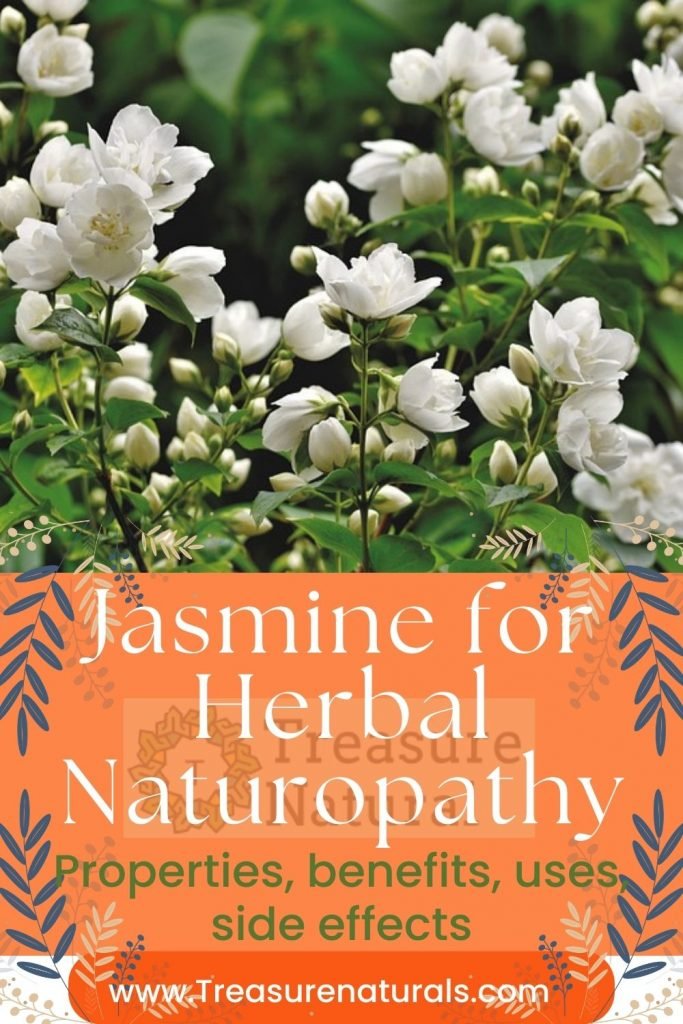
Jasmine ( Jasminum L. ) is a plant belonging to the Oleaceae family. Useful against stress and to promote rest, it has a sedative, soothing and antioxidant action. Let’s find out better.
Properties of jasmine
Jasmine is used for many purposes because its properties are many. It turns out to be a mild sedative, capable of helping to rest and calm agitated mental states (anti-stress).
Jasmine is effective in soothing cough and breathing problems. It is used for its analgesic and antispasmodic properties also in cases of premenstrual syndrome or pain during menstruation.
It also has antioxidant capabilities due to the flavonoids contained within it, thus also becoming a natural anti- aging remedy because it fights the free radicals responsible for cellular aging.
How to use
Jasmine is composed of active ingredients such as linalyl and benzoyl acetate, linalool, phenylacetic acid, farnesol and in particular jasmone which is the part responsible for its fragrance. The main product obtained by steam distillation or by enflorage is the essential oil of jasmine flowers.
INTERNAL USE: one of the classic methods of taking jasmine internally is jasmine tea where the dried flowers are mixed with the tea leaves. Furthermore, the dried jasmine flower is used as or as a flavoring in some pastry recipes such as biscuits and jams. The aroma of jasmine is sought after and considered a delicacy; in fact, it is present in history as a fragrance in the foods that arrived at the tables of the nobles and the class of the richest people who boasted its use as a habit only granted to them. Its properties, even in small dosages for internal use, are calming, analgesic and mildly sedative.
EXTERNAL USE: the methods of external intake are various, the essential oil of jasmine can be diluted with other oils or added to creams to help massages, or it can act as a pleasant relaxing scent when used together with an environmental diffuser or, with the same ability to release tension, a few drops can be added in a bathtub. The cost of essential oil is quite conspicuous precisely because large quantities of flowers are needed to obtain very small quantities of essential oil. Unfortunately, on the market there are often synthetic jasmine aromas that reproduce the aroma but which are not extracted from the plant. Its tone is associated with the 4th chakra, the one that corresponds to the heart area and, in fact, it is used for the relaxation of the breath and the opening towards the other and the world.
Contraindications of jasmine
Some systems of traditional medicine or some schools of alternative medicine attribute numerous properties to jasmine that are not always proven by scientific tests. Jasmine essential oil, like the vast majority of essential oils, can be highly irritating to the mucous membranes , therefore it is not recommended for external use.
Description of the plant
The primary characteristic of the jasmine plant is undoubtedly the unmistakable aroma, which accompanies the long flowering that begins in spring.
It is a climbing plant that can grow over 4 meters in height. It can also be set as a tree through pruning, or it can be left to grow like a lush bush.
The leaves are dark green and the flowers are star-shaped with 5 petals with a pure white color which is the secret of its innate elegance. The flowering period is therefore from spring to early autumn and with its fragrant flowers it softly fills the whole surrounding area with sweetness and refinement.
The best area for growth is in sunny exposure and sheltered from the wind. It does not like water stagnation and in winter it requires protection from the cold with nonwoven fabric and mulch on the ground at the base of the growth branches.
Jasmine habitat
Jasmine is definitely a subtropical plant, of Asian origin , although it can easily withstand the low temperatures of temperate climates.
Due to its scent, its ornamental characteristics and the medicinal properties attributed to it, jasmine was imported into the Mediterranean area and into the countries of northern Europe.
Background

The name “jasmine” mostly refers to Jasminum officinalis, otherwise known as common jasmine. It is native to an area that goes from Asia Minor to the Indian peninsula, it is not for nothing that it is the national flower of Pakistan. Damascus is also defined as the city of jasmine and jasmine is the flower symbol of the city itself.
Linked since ancient times to the idea of pure and unconditional love, it is linked to the figure of the Madonna. Even in the Muslim tradition, jasmine is a symbol of divine love and is the flower of Fatima, daughter of the prophet Mohammed.






